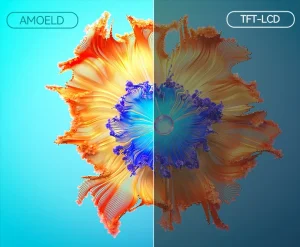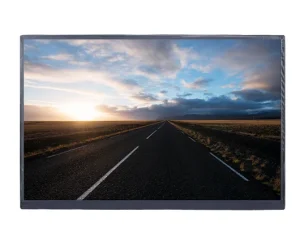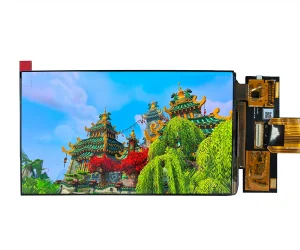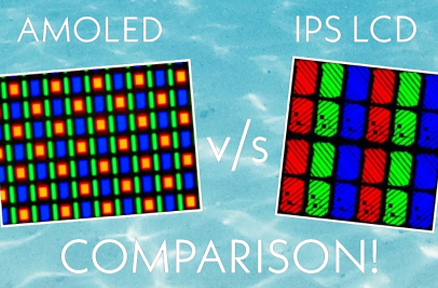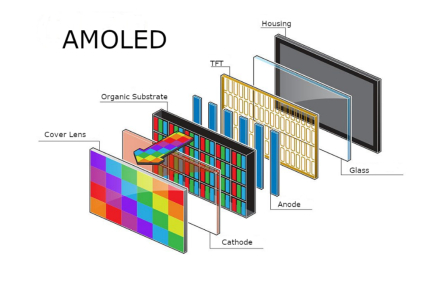In the image-driven world that we live in today, the technology with which you equip your screen can quite literally be the difference between worlds when it comes to how well your business interacts with your audience. Regardless of whether you put them into digital signage, interactive kiosks, or product displays, the work of how well the screen quality, color accuracy, and purity perform is failure or success in being noticed and delivering your message. Two dominant display technologies competing in marketplaces are TFT LCD and AMOLED. It is critical to understand the nuances of TFT LCD display against AMOLED in order to make wise choices based on your business needs and budget.
Understanding TFT LCD Display Technology
What is TFT LCD?
TFT, or Thin-Film Transistor, is an LCD that utilizes thin-film transistors to switch on individual pixels. Active matrix technology of TFT offers better image quality and response time compared to the passive matrix LCD. Broad usage in computer monitors, TV, mobile phone, and industrial equipment has TFT LCD.
Key Features and Benefits of TFT LCD Display
Good Color Rendering: IPS (In-Plane Switching) TFT LCDs ensure good color definition and faithfulness with almost any view angle.
Good Power Efficiency: TFT LCDs offer a fine balance of performance and energy consumption.
Physical Stress Resistance: They are capable of withstanding some amount of shock and pressure.
Personalization Options: Cover glass, backlight and interfaces can be personalized.
Breadth of Availability: TFT LCD is older and today is ubiquitous in any device, whether a mobile phone or even a TV.
Learning About AMOLED Screen Technology
What is AMOLED?
AMOLED, or Active-Matrix Organic Light-Emitting Diode, is a display technology where pixels emit light as an electric current flows through them. Self-emissive AMOLEDs produce high contrast ratios and rich colors. They are ubiquitous on flagship smartphones, TVs, and wearables.
Key Features and Advantages of AMOLED Displays
Greater Contrast Ratios: AMOLEDs provide true blacks by simply switching off the pixels, with contrast ratios of infinity.
Rich Colors: The pixels are self-emitting, and rich, deep colors are thus accommodated that add richness to the experience.
Ginormous Viewing Angles: The colors remain unaffected even when viewed from very acute angles.
Fast Response Times: AMOLEDs possess very fast response times, and therefore motion blur is prevented and smooth transitions are assured.
Less Power Consumed: consume less power than TFT monitors since the pixels employed in an AMOLED display only illuminate when necessary, as opposed to pixels in a TFT monitor, which are constantly powered by the backlight.
Thin Profile: Extremely thin profile since there is no backlight needed.
TFT LCD Display vs AMOLED: A Detailed Comparison
Image Quality: Color Accuracy, Contrast, and Brightness
AMOLED displays are most likely to yield improved image quality since they are self-emissive. They can yield a higher contrast ratio, deeper colors, and deeper blacks than TFT LCDs. High-brightness TFT LCDs can offer reasonable color acuity and luminance, which is suitable for high-luminance applications.
Power Consumption: Efficiency and Battery Life
AMOLED screens consume less power compared to TFT LCDs, especially for black content. AMOLED screens contain pixels that are only turned on when they are necessary; therefore, in case of prolonged black or low brightness content, they conserve power. TFT LCDs possess a permanently lit backlight to illuminate the entire display screen and therefore the power utilized is greater.
Viewing Angle: How Clear It Is When Viewed from Different Angles
AMOLEDs do not suffer from the wide viewing angles limitation of TFT screens, i.e., you can see the screen at more angles without the colors warping. IPS TFT LCDs also have wide viewing angles but in the way that colors never warp even from alternate angles of view.
Response Time: Smoothness of Motion and Transitions
AMOLEDs’ better response time is provided with substantially greater pixel switching speeds compared to those of TFT LCDs. It provides better motion smoothness, lower blur, and higher transition and hence the AMOLEDs are well-suited for high-speed image applications, such as video viewing or gaming.
Lifespan and Durability: Lifetime and Damage Resistance
TFT LCDs are also tougher than AMOLED screens and can resist. The organic component of AMOLED degrades over time and causes color shift or burn-in. But the technology involved in placing AMOLED has become much better and ensured the process is more reliable. TFT LCDs are tough and can withstand some amount of shock.
Cost and Availability: Accessibility and Affordability
TFT LCDs are also less expensive to manufacture than AMOLED displays. This means lower costs for manufacturers and consumers. TFT LCDs are more easily found in various screen sizes and manufactured by many different companies, and thus there is greater flexibility in terms of purchasing and customizing screens.
Applications: Which Technology Is Best Suited to Different Business Scenarios?
Digital Signage and Advertising
For outdoor digital signage, high-brightness TFT LCDs are used because they can be seen outdoors. Where image quality is of most importance indoors, AMOLED-based displays can be used to provide a richer and more enjoyable experience.
Industrial and Medical Displays
TFT LCDs are widely used in industrial and medical displays due to their ruggedness, reliability, and high operating temperature ranges. Personalization of the interface and other features makes TFT LCDs a universal solution for such demanding uses.
Consumer Electronics and Mobile Devices
AMOLED screens are the most superior high-end smartphone screen because they possess higher image quality, are thinner, and consume less power. TFT LCDs are used in midrange smartphones, and they are the money-for-money choice.
The Right Decision: Your Business Factors
Whether to opt for TFT LCD screen or AMOLED is the decision which you are about to make, so here are the factors which must be written down:
- Budget: What is your investment limit on display technology?
- Image Quality Requirements: How much color accuracy, contrast ratio, and luminance do you need?
- Energy Consumption Requirements: How important is energy efficiency to your application?
- Viewing Environment: Indoors or outdoors, what viewing angle?
- Life Expectation: For how long must the display be expected to perform?
- Customization Choices: Do you need customization features to meet your project requirements display-wise?
Conclusion: Cost vs. Performance Trade-off between TFT LCD Display and AMOLED
Both of the display technologies for images, AMOLED and TFT LCD, have some advantages that they can offer to companies. Although AMOLED is better in terms of image quality and power saving, TFT LCD offers a cost-effective and long-lasting solution.
Kadi Display offers a wide range of AMOLED displays and TFT LCDs according to various business needs. Solutions may be suitable based on customer-specific services for individual project requirements to deliver maximum performance with gorgeous visuals.







